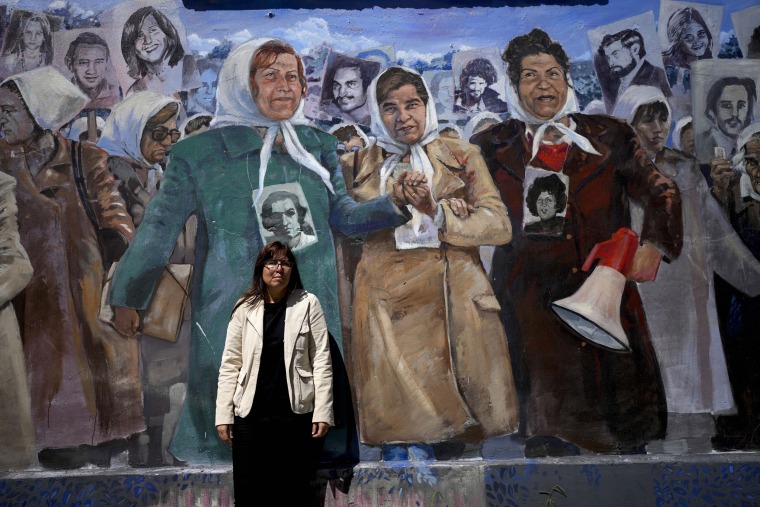Abducted as babies in the 1970s, these Argentines found a way toward their true
BUENOS AIRES, Argentina — Claudia Poblete can’t help it. On certain days, as she passes in front of a church, she automatically crosses herself while her children gaze at her with confusion.
She didn’t raise them as Catholics — as she was — because her spirituality has shifted.
In 2000, Poblete didn’t go by her current name. She was called Mercedes Landa, and before a judge showed her a DNA test result that confirmed her true identity, she was unaware that she was among hundreds of babies who were abducted during the Argentine dictatorship.
Poblete is one of the 133 “recovered grandchildren” of Argentina. Now adults, they were found by their biological families years after their parents went missing when the military took power on March 24, 1976.

Until democracy was restored in 1983, at least 30,000 people had disappeared. Many of them were militants whose mothers started gathering at Buenos Aires’ main square and later became known as the Mothers of Plaza de Mayo.
Many of the Mothers had children who were detained and tortured inside military facilities that resembled concentration camps. Others were transported on planes from which they were thrown alive into the sea.
Some of the Mothers knew that their daughters or daughters-in-law were pregnant, but dozens more found out through survivors’ testimonies. And so, under the impression that their children were killed but their grandchildren survived, they started searching for them and created a human rights organization called Grandmothers of Plaza de Mayo.
Poblete knew of their existence, but the lieutenant colonel who she thought was her father told her that they were “crazy” women who wanted revenge on the military. And Poblete, who called him “dad” for half her life, never suspected he lied.
“I didn’t know about the abducted children,” Poblete said.
She was eight months old when her family was taken to an illegal detention center in November 1978. Once there, she was abducted from her mother and handed to a military doctor who looked for a family willing to keep her. Soon after, Ceferino Landa and his wife registered Poblete as their biological daughter and called her Mercedes.
“For almost 21 years, they never even told me that I could be adopted,” the now 46-year-old Poblete said. “They always maintained the lie.”
To prevent her from finding the truth, “Merceditas” — as they called her — was not allowed to walk by herself on the streets. She could not travel alone, read books of her choice or watch TV shows that were not approved by Landa. She attended a Catholic school without suspecting that the church was complicit with the military who broke her biological family apart.
“It has been investigated and proven that members of the Catholic Church participated in torture sessions and took confessions from people in clandestine centers,” said Mayki Gorosito, executive director of a museum founded in the former Navy School of Mechanics. Known as ESMA, it housed the most infamous illegal detention center during the dictatorship.
Inside these detention centers, several priests and nuns were aware of the illegal adoptions. Outside, at Catholic schools where irregularities of birth certificates were easy to spot, the personnel didn’t raise any flags.
“My grandfather told me that, when he was looking for me and my mother, he approached the chaplain of my school to ask for information,” Poblete said. But the priest remained silent. “That complicity is impossible to reconcile with a supposedly Christian vision.”
It took her years to share her story publicly and to let go of the guilt that many recovered grandchildren share.
“I carried a lot of responsibilities I was not supposed to,” said Pedro Alejandro Sandoval, who the Grandmothers found in 2004.
He, like Poblete, kept in touch with his “appropriators” — the couples who pretended to be their parents — for years and didn’t embrace his biological relatives immediately. “It was not until the trial that I started to feel free,” Sandoval said.
The searches of the Grandmothers began in different ways. In the late 1970s, with no resources at hand, they used to wait outside kindergartens in the hope of finding resemblances between the infants and their disappeared children. But then, in 1987, the Argentine government took up their cause.
Through the National Commission for the Right to Identity (known for its Spanish initials, CONADI) and the National Genetic Data Bank — both of which were specifically created to aid…
Read More: Abducted as babies in the 1970s, these Argentines found a way toward their true

